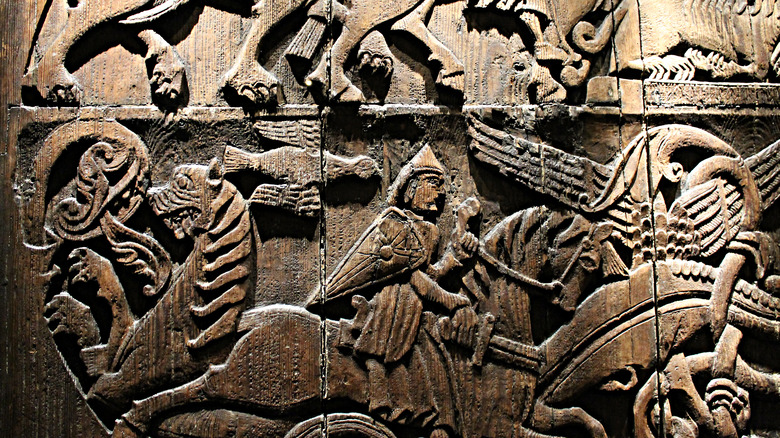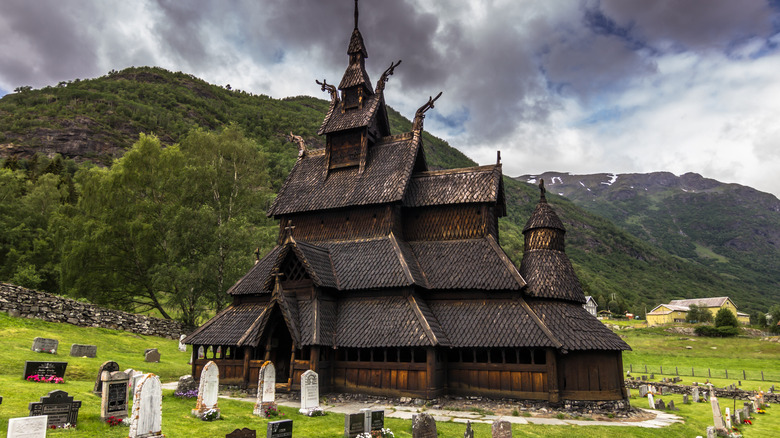What Did Temples Look Like For Believers Of Norse Mythology?
Norse mythology has lived on well beyond the time of Scandinavian pagans and Vikings, with names like Thor, Odin, and Loki well-known across the world. While we all might have some understanding of the Norse gods and mythological adventures they undertook, less is known about the everyday people who believed in Odin and company, and their places of worship. That image was made much clearer by the recent discovery of a temple dedicated to Odin and Thor, around 1,200 years old (via Livescience).
Archaeologists discovered the remains of a wooden temple in Norway that stood 40 feet high and 45 feet long that was built toward the end of the eighth century. The temple, or "god house," would have mainly been used as the site of sacrifices for the midsummer and midwinter solstices, around a century before the Vikings made their mythology and homeland famous through their raids and trading expeditions. God houses have been discovered before in Sweden and Denmark, but this latest discovery confirms their existence in Norway.
God houses were impressive structures
According to Archaeology, these temples to the Norse gods were impressive structures used by wealthy families in the region. The four-story wood structure would have towered over the landscape, and included a massive cooking pit that was filled with animal bones. Other oddities found at the site include a large white stone that could have been used during fertility rituals. Later god houses would also include tall towers protruding through the roof, influenced by the basilicas of Britain and Western Europe.
The interior of the temple would have been filled with wooden figurines that represented the major gods of Norse mythology, like Odin, Thor, and Freyr. There, worshipers could place offerings like meat, drink, and even gold (via Livescience). Though the god houses and similar Norse places of worship were largely influenced by the Christian churches seen by traveling Vikings, many were destroyed throughout the 11th century as Christianity came to Norway and the rest of Scandinavia. Perhaps new evidence about these ancient places of worship is still waiting to be uncovered.

